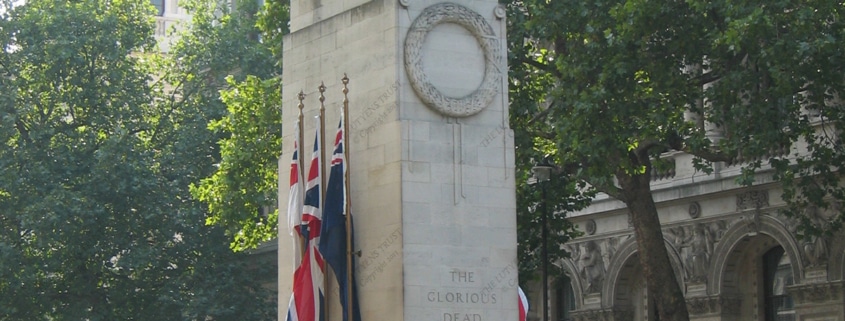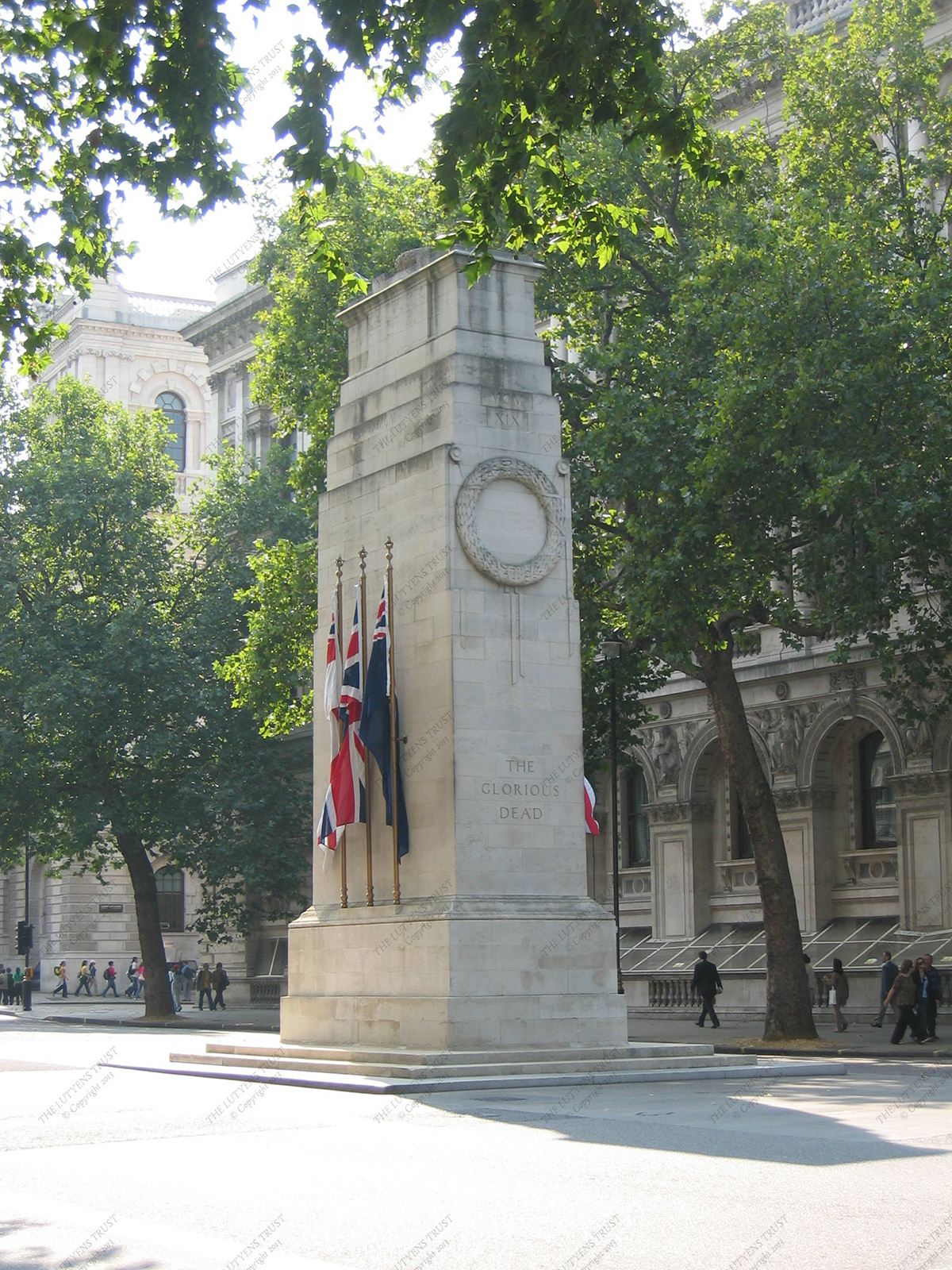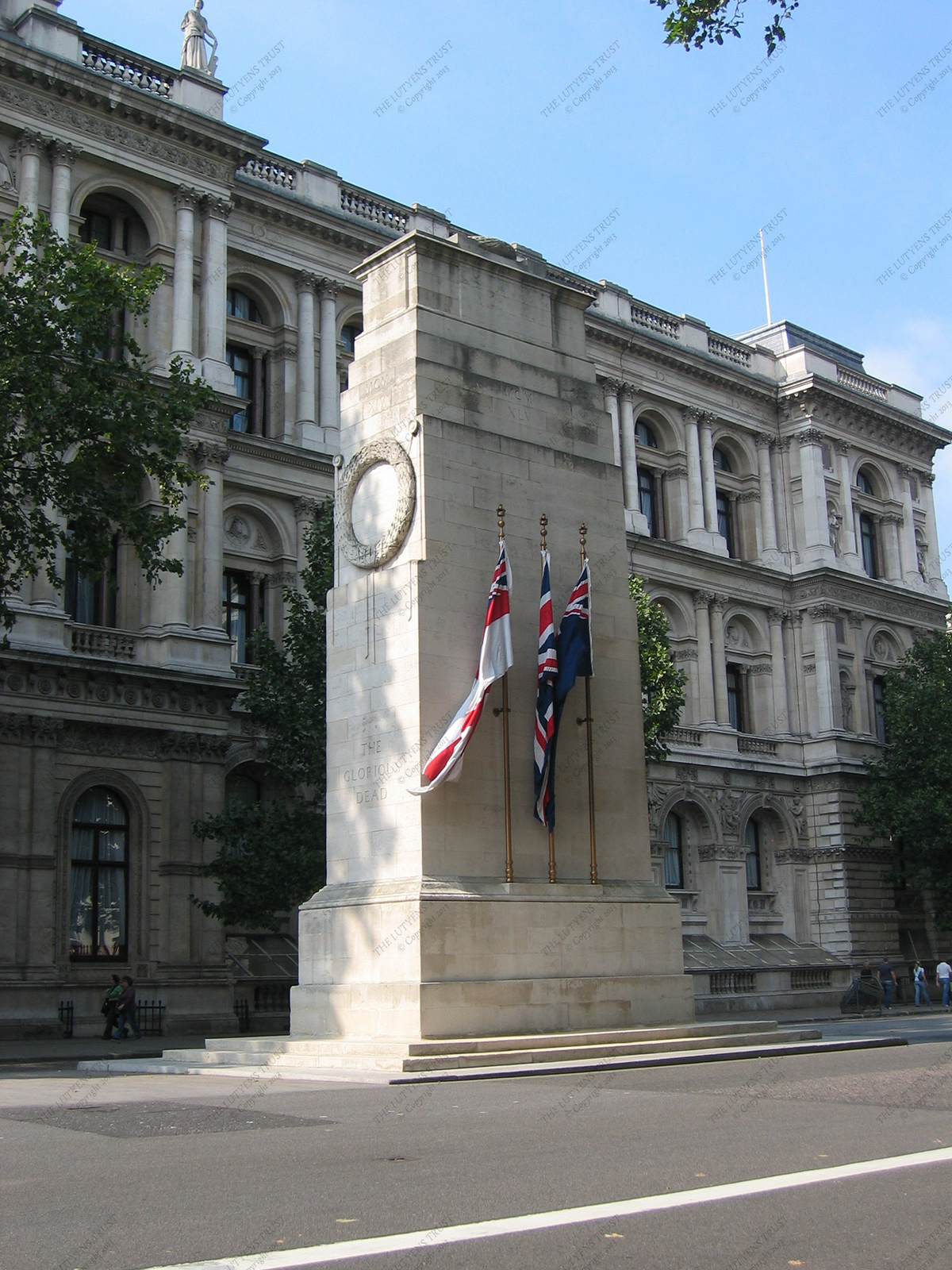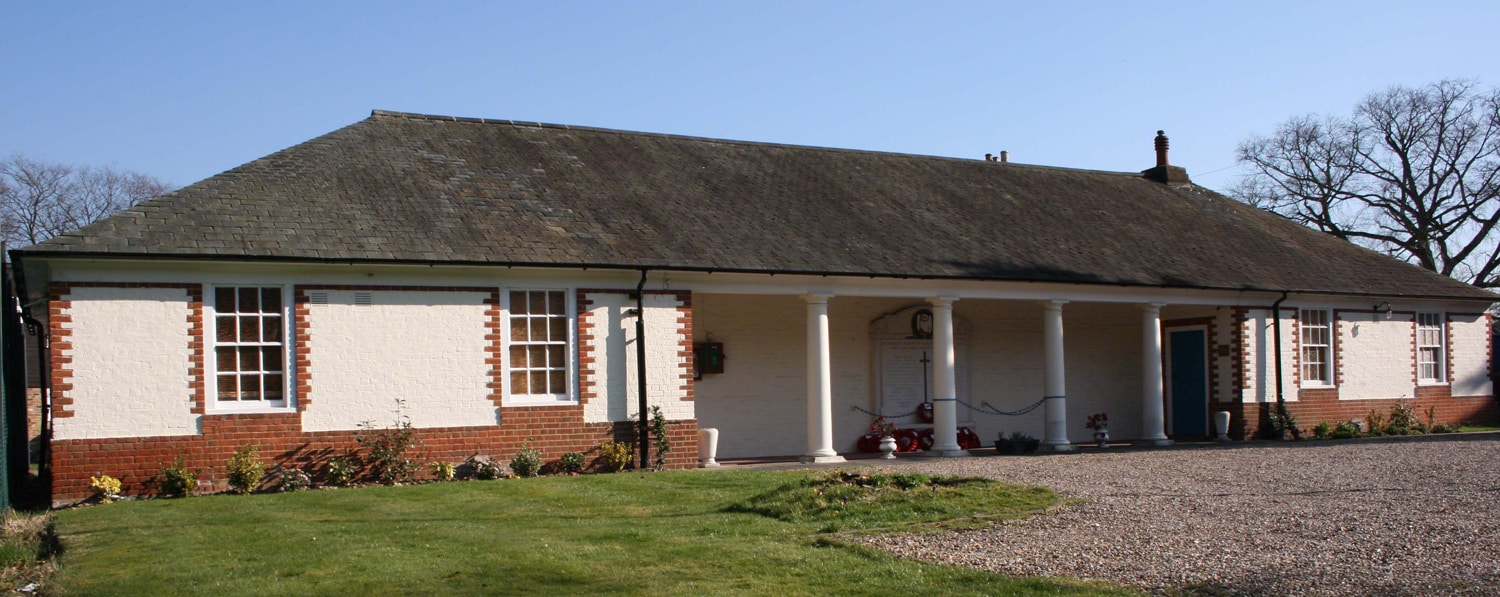
Description
The Cenotaph – a monument erected to the dead who are buried elsewhere – is the national memorial to the British Empire dead of the Great War, but was originally a temporary structure erected for the Peace Celebrations held in London on July 19, 1919. Lloyd George saw Lutyens early in June and told him that a ‘catafalque’ was required in Whitehall. Remembering Gertrude Jekyll’s massive rustic seat at Munstead which, a quarter of a century before, had been christened the ‘cenotaph of Sigismunda’, Lutyens immediately replied, ‘not a catafalque but a cenotaph’. The design, almost exactly as executed, was worked out in a matter of hours and Lutyens produced a sketch for Sir Frank Baines, Chief Architect to the Office of Works, that same day. Early in July Lutyens wrote to Lady Emily that Lord Curzon approved his design ‘but wanted it less catafalque, so I am putting a basin on it – to spout a pillar of flame by night and, I hope, smoke by day’. (July 7, 1919). This would probably be the sketch rapidly executed at dinner with Lady Sackville in July, with other variant designs, 3 and 4. It is interesting that in the final design he reverted to his original sketch worked out so rapidly after seeing the Prime Minister. The first Cenotaph, of wood and plaster, was unveiled on July 19 – its architect was not invited to the ceremony.Lutyens wrote to the First Commissioner of Works on July 29 that ‘I should like the permanent monument to be where it now stands, of Portland stone with all the refinement digestion can invent to perfect it.’ The refinement was considerable. Not only is the tall pylon supporting the ‘empty tomb’ set back on alternate planes according to a subtle geometry, but there is also no straight line or flat surface in the structure. Every surface is given ‘entasis’ and subtly curved – as on the Parthenon – for optical effect; the verticals would meet at an imaginary point 1000 feet above the ground. The calculations for the design, based on Professor Hamblin’s measurements of the Parthenon, are said to have filled a manuscript book of thirty-three pages. The permanent Cenotaph differed slightly from the prototype in such features as the omission of the flag draped over the coffin. Lutyens was unable to use painted stone flags as he wished but he did resist the strong demands to incorporate religious symbols on the structure.
The temporary Cenotaph was taken down in January 1920. Work on the permanent structure, a triumph of precise stone-cutting – Lutyens observed that ‘no building of the same size in modern times has had more labour put into it.’ – began in October and it was unveiled on the second anniversary of the Armistice on November 11, 1920. The immense popular and professional success of Lutyens’s intuitive brilliance with his Cenotaph design suddenly made him into the most famous architect in the British Empire.
Lutyens’s increasingly monumental ‘Elemental Mode’, a geometrical and subtly proportioned organisation of mass abstracted from the humanistic language of the classical tradition, was further exploited in his war memorials in France but is most easily appreciated in the complex, elegant and poignant simplicity of the Cenotaph. (Amery et al, 1981, cat no.289)
Bibliography
Amery, C., Richardson, M. and Stamp, G., (1981) Lutyens, the Work of the English Architect Sir Edwin Lutyens (1869-1944): Hayward Gallery London, 18 November 1981 – 31 January 1982. London: Arts Council of Great Britain.Also Cited In
Butler, A., 1950. The architecture of Sir Edwin Lutyens: the Lutyens memorial series. Vol III: Town and Public Buildings: Memorials: The Metropolitan Cathedral, Liverpool, Country Life: London and Scibners: New York.Gliddon, G. and Skelton, T.J. (2008) Lutyens and the Great War. London: Frances Lincoln.
Bradley S & Pevsner N (2003) LONDON 6: WESTMINSTER. The Buildings of England. New Haven: Yale University Press.
Gradidge, R. (1982) Edwin Lutyens: Architect Laureate. London: Allen & Unwin.
THE WHITEHALL CENOTAPH. 1919. Country Life (Archive : 1901 – 2005), 46(1178), pp. 131-133.
Listing Grade
IListing Reference
1357354Client
Imperial War Graves Commission



